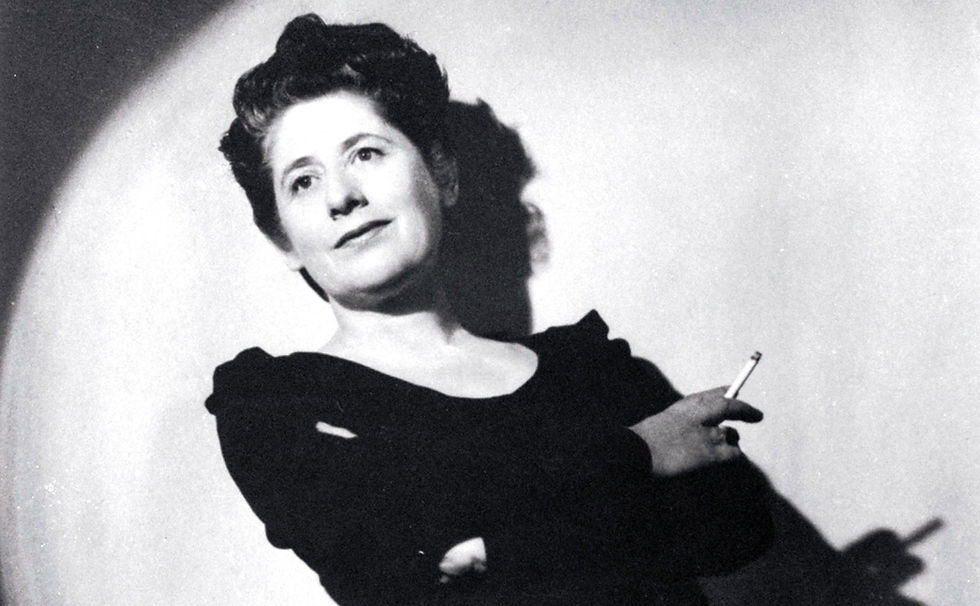- Nick Cardillo
- Feb 9, 2022
- 4 min read

For those of you who have been following my output on social media recently, you will know that I am currently at work on my first detective novel. There have been many aborted attempts made in years past, but 2022 is the year that I have set myself the goal of writing – and more importantly finishing – a full-length detective novel in the region of 60,000-80,000 words.
In writing this story, I have taken a number of cues from my favorite Golden Age Mystery writers, though – as I wrote back in December – I have taken most of my inspiration from Dame Agatha Christie. Her pared-down prose and the care and subtlety with which she planted important information in the text have been guiding lights during both the planning and writing stages. One central clue is, I think, pure Christie and inspired by one of my favorite moments from one of her finest books. (No, I cannot say which one; that would spoil everything!) However, as I continue to forge a path through the tangled skein of hidden motivations, uncertain timelines and plenty of red herrings, I am finding myself inspired by another favorite mystery writer from the Golden Age: Ngaio Marsh.
I am sure there is legion of Golden Age Mystery readers who have probably clicked away from this article now that I have even invoked Marsh’s name. Marsh does not have the greatest reputation in the classic mystery community, though I am beginning to find that there are just as many defenders of hers out there as there are critics. Marsh’s books are often accused of lacking energy; her narrative momentum curiously screeching to a halt after the central murder of the novel has occurred. What then follows are repetitive rounds of interviews between her detective character, Inspector Alleyn of Scotland Yard, and the suspects. This stretch of story is often (un)affectionately referred to as Dragging the Marsh. Therefore, as I continue to write, I remind myself not to let those suspect interviews go on too long and I am always looking for ways to make sure the middle section of the book does not drag.
I can imagine what you’re thinking: how can I call Marsh a favorite? Despite my recognition and acknowledgement of the common criticisms leveled at her, I do consider myself a fan of Dame Ngaio Marsh. She has certainly earned her place in the pantheon of Crime Queens alongside Agatha Christie, Dorothy L. Sayers, and Margery Allingham (plus or minus a few more names). Marsh’s literary output was a strong one: her first novel, A Man Lay Dead, was published in 1934 and she would add new exploits to the prestigious career of gentleman sleuth Roderick Alleyn into the early 1980s. I have written on this blog before of my fondness for her final novel, Light Thickens (published in 1982), which may not hold up as a cleverly-plotted mystery, but is a fascinating look at theatrical life in the midst of a turbulent production. Marsh was known to have called the theatre her first love and was intimately involved with the arts throughout her life. The books set in theatrical and artistic circles remain some of Marsh's finest. The amateur theatrical society at the center of her book Overture to Death (1939) is rendered with such care, such accuracy, and more than a helping of biting wit that it remains an incredibly real and laugh-out-loud portrayal to this day.
Therein lies Marsh’s strengths as a mystery writer. Her characters and settings are wonderfully realized, often described from Marsh's first-hand knowledge of her subjects. As such, Marsh is poised at a interesting spot on the mystery writer continuum: one can draw a direct line from Dorothy L. Sayers and early Agatha Christie through Marsh to the psychologically rich detective stories of P.D. James and a new generation of writers of mysteries' Silver Age. I have a little theory that I am developing about the most famous Golden Age writers and how you can easily divide them into two camps: mystery writers and writers of mystery. The former are those creators who prioritize the puzzle plot above all else; neatly hoodwinking the reader with an artfully-concealed culprit but at the expense of solid characters or sense of place. The latter are more interested in telling stories populated by genuine human beings whose world is disrupted by a murder. The guilty party may be easier to identify during stories like these, but in service of the capital-S Story, such an ending was inevitable. Marsh may not dazzle modern readers like Christie, Carr, or Queen could, but her skill as a writer is arguably strongest of them all.
I cannot claim to be an expert on Marsh, but as I have learned to appreciate more of the writers from the Golden Age, she has emerged as one of my favorites and as I forge ahead with my own writing, I will strive to make my characters feel as real as Marsh's. To further honor Dame Ngaio Marsh, I am sitting down to read one of her novels for February and I urge you to join me. Consider this my informal challenge to you all – the Ngaio Marsh Challenge. Read or re-read a Marsh novel, post your review and judge it on its own merits without comparisons to the works of Marsh's illustrious contemporaries. Though you may not love her books, I think many of you will, nevertheless, be pleasantly surprised by what you find.
There’s No One like Ngaio.



